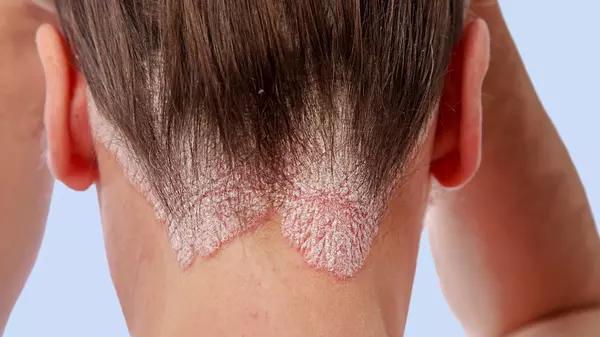Is drug abuse genetic

If you tested your DNA with a personal genomics service like 23andMe, AncestryDNA, FamilyTreeDNA, MyHeritage or another testing company, you can learn more about your risk factors for hundreds of diseases. By clicking the button above ⬆️, you can upload your raw DNA data file and receive a personalized 250-page health report with research links that is the most comprehensive.
There is a significant interest among individuals, particularly those with a familial background of addiction, to understand the contributing factors of addiction. Is addiction hereditary? While it is accurate that certain individuals may possess a genetic inclination towards addiction, commonly referred to as a substance use disorder (SUD), this is a medical condition characterized by the compulsive use of substances despite adverse outcomes.
Although pinpointing the exact genetic factor is challenging, various research indicates that genes play a role in substance use. Through meticulous investigations, experts approximate that an individual's genetics contribute to 40-60 percent of their susceptibility.
Below are some instances of genes that impact the likelihood of addiction:
The ALDH2*2 gene variant provides protection by producing a protein that is unable to metabolize alcohol as efficiently as the normal variant. Individuals carrying ALDH2*2 may suffer from symptoms such as nausea, facial flushing, headache, and rapid heartbeat upon alcohol consumption.
Mice that exhibit increased protein production from the Mpdz gene encounter milder withdrawal symptoms when exposed to alcohol and sedative-hypnotic drugs such as barbiturates.
People addicted to alcohol, cocaine, and opioids are more likely to possess the A1 form (allele) of the dopamine receptor gene DRD2, which is believed to impact the way drugs affect the reward pathway.
Mice exhibiting particular variations in the Per1 and Per2 genes display a heightened propensity for alcohol consumption, particularly when subjected to stress. Similarly, individuals, particularly adolescents, possessing specific Per1 and Per2 variations also exhibit a greater likelihood of exhibiting this behavior.
Fruit flies lacking the genemoody exhibit heightened sensitivity to cocaine as moody is responsible for producing a crucial protein required for maintaining a healthy blood-brain barrier.
The protein encoded by the gene PSD-95 plays a role in memory and learning. Mice categorized as "super-sensitive" to cocaine produce only half the amount of this protein as regular mice.
Changes in the OPRM1 gene, which affect the production of protein, can differ among individuals. Some of these changes are prevalent in those with opioid use disorder, while others raise the likelihood of developing alcohol dependence.
Individuals possessing two copies of the CHRNA5 gene variant are twice as prone to nicotine addiction as those with two copies of an alternative allele. The CHRNA5 gene encodes a protein that facilitates the detection of nicotine by cells.
The absence of GluR2 receptor in rats presents a dual effect of vulnerability and safeguarding. The rats experience reduced gratification from cocaine, leading to a lack of motivation to obtain the drug through effort. However, when the drug is readily accessible, they consume copious amounts to achieve the desired effects.
The metabolism of alcohol is influenced by Alcohol dehydrogenase 1B (ADH1B) and aldehyde dehydrogenase 2 (ALDH2; mitochondrial aldehyde dehydrogenase) genes. Variations in gene expression that increase ADH1B activity or decrease ALDH2 activity can cause unpleasant symptoms when consuming alcohol. These genetic differences may provide a safeguard against alcoholism.
Alcohol use disorder (AUD), a medical condition characterized by the unmanageable consumption of alcohol despite adverse effects, has been linked to GABRA2 and CHRM2 genes. Furthermore, these genes are highly correlated with the early onset of alcoholism.
Genes such as MAOA, SLC6A4, COMT, and others are linked to stress resilience. These genes may cause variations in stress responses among individuals, which, when combined with other factors, could affect the likelihood of addiction.
In a comprehensive analysis of an international database, it was discovered that over 400 sites within the human genome and a minimum of 566 variations at these sites are linked to smoking or alcohol consumption. Notably, CUL3, PDE4B, and PTGER3 were singled out as having a noteworthy impact.
Cocaine dependence was found to be linked with HIST1H2BD in a particular study.
Follow the link of the selected polymorphism to read a brief description of how the selected polymorphism affects Drug dependence and see a list of existing studies.
SNP polymorphisms related to the topic Drug dependence:
| rs1799913 | Variants in the tryptophan hydroxylase gene involved in the development and treatment of opiate, heroin and cocaine addiction. |
| rs12364283 | The striatal polymorphism of the D2 receptor is a novel genetic marker of multiple addiction phenotypes: alcohol, nicotine, heroin and opioid dependence. |
| rs12749204 | The rs12749204 variation increases susceptibility to substance and cocaine dependence by 8.79-fold for carriers of the G allele |
| rs2236857 | The OPRD1 gene polymorphism is associated with opioid dependence. |
| rs16969968 | The nicotinic acetylcholine receptor risk allele in CHRNA5 causes a higher risk of nicotine dependence, lung cancer, but a lower risk of cocaine dependence. |
| rs1799971 | The A118G polymorphism of the mu-opioid receptor gene causes severe craving for alcohol that is treatable with naltrexone. |
| rs4648317 | Tendency to higher nicotine dependence, increased impulsivity and thrill-seeking. |
| rs1800497 | TaqIA polymorphisms of the DRD2 dopamine D2 receptor gene are associated with concomitant alcohol use and depressive disorders. |
| rs1022563 | Polymorphisms of the prodynorphin (PDYN) gene are associated with heroin and cocaine dependence. |
| rs2283265 | Functional variants of the dopamine receptor gene are a potential factor in neuropsychiatric disorders. |
| rs5326 | D1 dopamine receptor gene is associated with the length of the interval between first heroin use and onset of dependence in heroin addicts. Also influences the increased risk of salt-sensitive hypertension. |
| rs1534891 | Csnk1e is a genetic regulator of sensitivity to psychostimulants and opioids. |
| rs910079 | A functional haplotype associated with predisposition to the development of cocaine dependence. |
| rs737866 | |
| rs1997794 | |
| rs3778151 | |
| rs694066 | |
| rs510769 | |
| rs6473797 | |
| rs2236861 | |
| rs3766951 | |
| rs3758987 | |
| rs6882300 | |
| rs2952768 | |
| rs1045642 | |
| rs6275 | |
| rs1714984 | |
| rs965972 | |
| rs1867898 | |
| rs9387522 | |
| rs11503014 | |
| rs910080 | |
| rs2239670 | |
| rs737865 | |
| rs72840936 | |
| rs111325002 | |
| rs4129566 | |
| rs1128503 | |
| rs11944332 | |
| rs75686122 | |
| rs5443 | |
| rs11575893 | |
About The Author
Li DaliLi Dali, a National Foundation for Outstanding Youth Fund recipient, is a researcher at the School of Life Sciences in East China Normal University. He earned his PhD in genetics from Hunan Normal University in 2007 and conducted collaborative research at Texas A&M University during his doctoral studies. Li Dali and his team have optimized and innovated gene editing technology, leading to the establishment of a world-class system for constructing gene editing disease models.


